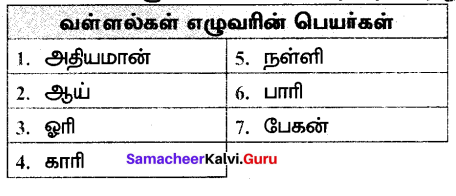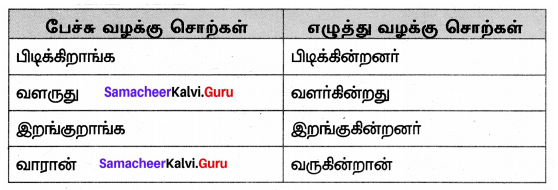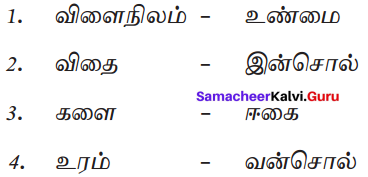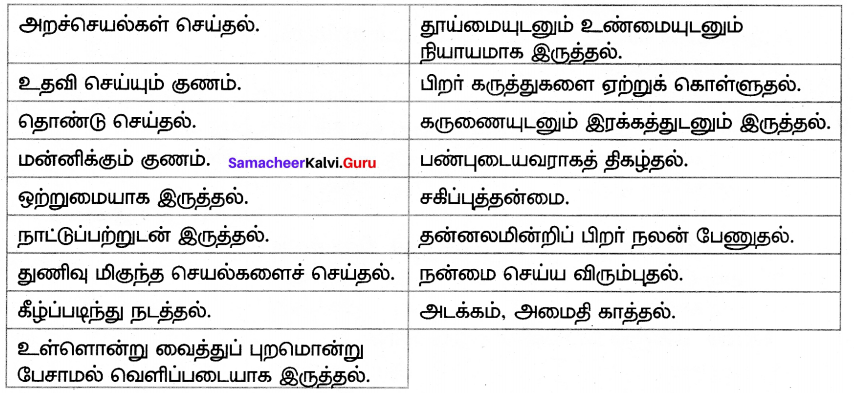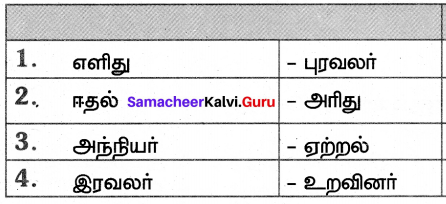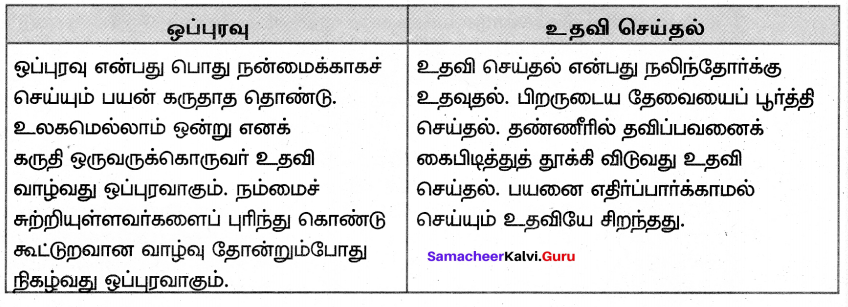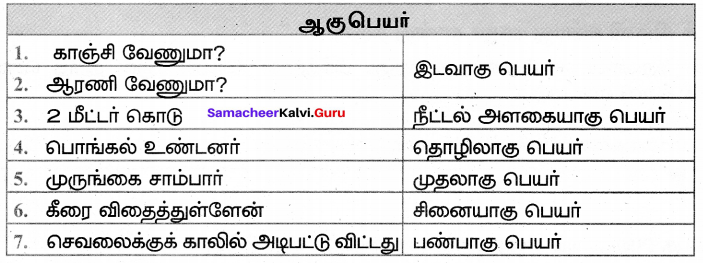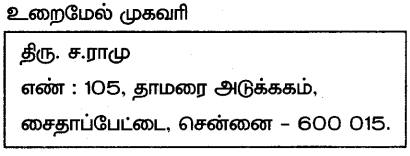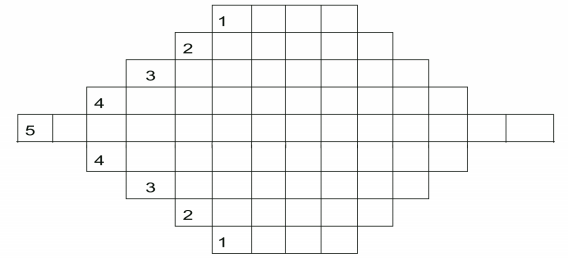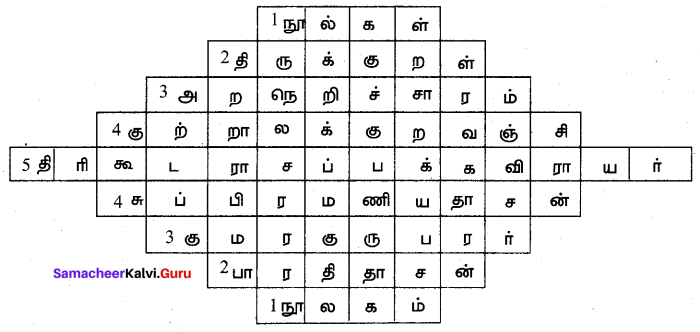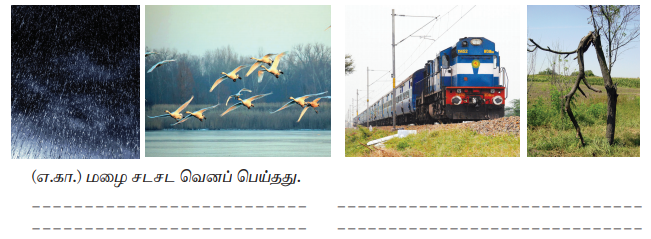Students can Download Tamil Chapter 2.4 பள்ளி மறுதிறப்பு Questions and Answers, Summary, Notes Pdf, Samacheer Kalvi 7th Tamil Book Solutions Guide Pdf helps you to revise the complete Tamilnadu State Board New Syllabus and score more marks in your examinations.
Tamilnadu Samacheer Kalvi 7th Tamil Solutions Term 2 Chapter 2.4 பள்ளி மறுதிறப்பு
மதிப்பீடு
Question 1.
மதிவாணன் பள்ளிக்குச் செல்ல முடிவெடுத்த நிகழ்வைச் சுருக்கி எழுதுக.
Answer:
மதிவாணன் கோடை விடுமுறையில் நாலைந்து நாள்கள் அக்கா வீடு, அத்தை வீடு என்று சென்று வந்தான். தொலைக்காட்சியைப் பார்த்துப் பொழுதுபோக்கினான்.
மதிவாணனின் நண்பன் கவின், “சும்மாதானே இருக்கே. வாடா பின்னலாடை நிறுவனத்துக்குப் போகலாம். புதிய உடைகள், எழுதுகோல்கள், குறிப்பேடுகள் வாங்கப் பணம் சம்பாதித்து விடுவாய்” என்றான். மதிவாணனும் சேர்ந்துவிட்டான்.
மதிவாணனுக்குப் புதிய அனுபவம் கிடைத்தது. சனிக்கிழமை வாரச் சம்பளம் கிடைத்தது. மேலும் வடை, தேநீர், இரவில் பரோட்டா, தோசை என்று சாப்பிட முடிந்தது.
வாழ்க்கை முழுவதும் தொழிலாளியா? எனச் சிந்தித்தான். தொழிலாளியாக இருப்பது கேவலமில்லை. ஆனால் படிக்கிற வயதில் வேலை தேவையா? எனச் சிந்தித்தான்.
படித்தால் வேறு வேலை கிடைக்கும். நல்ல வருமானம் வரும் எனத் தோன்றியது. கல்வியறிவு முதன்மையானது. ஒரு பட்டமாவது வாங்கவேண்டும் என எண்ணினான். அப்துல்கலாமும் அம்பேத்கரும் இருந்த விளம்பரப் பலகை கண்ணில் பட்டது. அவர்களைப் போல் உயர வேண்டுமெனில் படிக்க வேண்டும் என உணர்ந்தான்.
மதிவாணன் பேருந்து நிலையத்தில் நின்று கொண்டிருந்த போது படிப்பறிவில்லாத முதியவர் ஒருவர், அங்கு வந்து நின்ற பேருந்து நல்லூர் போகுமா?” என்று கேட்டார். ஒரு சிறுவன் பேருந்தின் முகப்பைப் பார்த்தான். எதுவும் பேசாமல் புன்முறுவல் பூத்தான்.
“என்னப்பா போகுமா?” என்று மீண்டும் கேட்டார். “யாருக்குத் தெரியும்? எங்களுக்குப் படிக்கத் தெரியாதே” என்று கூறியபடி ஒரு சிறுவன் முகத்தைத் திருப்பிக் கொண்டான். பெரியவர் “இதுகூட படிச்சுச் சொல்லத் தெரியாதா?” என்றார். ஒரு சிறுவன் பெரியவரே. இதப் படிக்கக் கூட உங்களுக்குத் தெரியாதா?” என்றான். மற்றவர்கள் சிரித்தனர். மதிவாணன் அப்பெரியவரிடம் “பேருந்து வந்தா சொல்றேன்” என்றான்.
![]()
முதியவர் கல்வியறிவு இல்லாததால் அவமானப்பட்டதைக் கவனித்தான். கல்வியறிவு இல்லையெனில் தானும் இவ்வாறு அவமானப்பட நேரும் என்ற எண்ணம் வந்தது.
நல்ல கல்வியறிவு தலைநிமிர்ந்து நிற்க வைக்கும். நல்ல படிப்புதான் சிறந்த மனிதனாக்கும் என்பதை உணர்ந்தான். வேலைக்குப் போவதை விடுத்துப் பள்ளிக்குச் செல்ல முடிவெடுத்தான்.
கற்பவை கற்றபின்
Question 1.
பள்ளி மறுதிறப்பு’ என்னும் கதையை வகுப்பில் நாடகமாக நடித்துக் காட்டுக.
Answer:
மாணவர்கள் தாங்களாகவே செய்ய வேண்டியவை.
Question 2.
எழுதப் படிக்கத் தெரியாதவர்களுக்கு எவ்வாறு உதவுவீர்கள்? வகுப்பில் கலந்துரையாடுக.
மாணவன் -1 : டேய் மணியைப் பார்த்தாயா? தேர்வில் முட்டை மதிப்பெண்
பெற்றுள்ளான்.
மாணவன் -2 : அப்படியெல்லாம் ஒருவரை ஏளனப்படுத்தாதே. அவன் நம் வகுப்பில் படிக்கும் மாணவன். அவனுக்கு என்ன பிரச்சனை? எதனால் படிக்க இயலவில்லை என்று சிந்தித்தாயா? அதை விட்டுவிட்டு ஏளனப்படுத்துகிறாயே?
மாணவன் -1 : என்னை மன்னித்துவிடு. ஏதோ விளையாட்டுத்தனமாகப் பேசிவிட்டேன் அவனுக்கு எவ்வாறு உதவலாம் என்று சொல்.
மாணவன் -2 : இதுதான் படிப்பவருக்கு அழகு. நீயும் நானும் சேர்ந்து அவனுக்குப் டு
பள்ளி வேளை நேரம் முடிந்ததும் படிப்பதற்குக் கற்றுக் கொடுக்கலாம். நீ அவனுடைய வீட்டிற்கு அருகில் இருக்கிறாய். தினமும் காலையில் கற்றுக்கொடு. நான் தினமும் மாலையில் பள்ளியிலேயே கற்றுக் கொடுக்கிறேன்.
மாணவன் -1 : நான் மொழிப் பாடங்களையும் அறிவியல் பாடத்தையும் கற்றுக் கொடுக்கிறேன்.
மாணவன் -2 : நான் கணிதம், சமூக அறிவியல் இரண்டு பாடத்தையும் கற்றுக் கொடுக்கிறேன்.
மாணவன் -1 : மொழிப்பாடத்தில் முதலில் எழுத்துகளை அடையாளப்படுத்தி புதிய
சொற்கள் உருவாக்குதல் போன்ற மொழிப்பயிற்சிகள் மூலம் எளிய முறையில் கற்றுக் கொடுப்பேன். சொந்தமாகப் பேசுதல், கடிதம், கட்டுரை எழுதுதல் ஆகியவற்றையும் கற்றுக் கொடுப்பேன்.
மாணவன் -2 : நானும் கணிதத்தை வாய்பாடுகள் படிக்க வைத்தல், எளிமையான வழிமுறைகளில் அறிவியலை இன்றைய வாழ்வியலுடனும் குடும்பத்திடனும் ஒப்பிட்டுப் பார்த்து புரிந்து கொள்ளச் செய்வேன்.
மாணவன் -1 : அறிவியல் பாடத்தை நாம் பயன்படுத்தும் பொருட்களுடன் ஒப்பிட்டுக்
கற்றுக் கொடுப்பேன்.
![]()
மாணவன் -2 : ஆம். நாம் இருவரும் சேர்ந்து மணியைப் படிக்க வைத்து அடுத்த
தேர்வில் நல்ல மதிப்பெண் பெறச் செய்வோம்.
